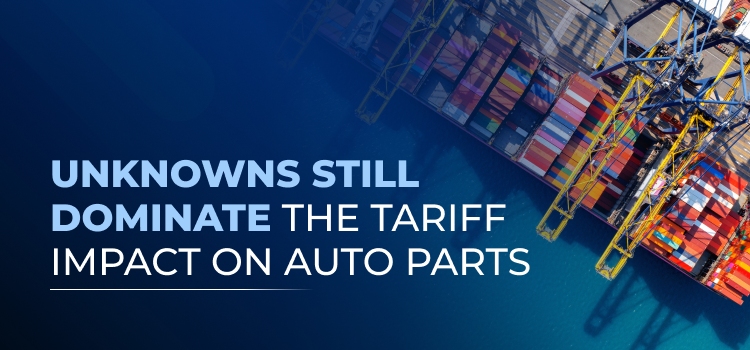Unknowns Still Dominate the Tariff Impact on Auto Parts

The global automotive supply chain is a finely tuned machine, but it’s facing new challenges as the U.S. government continues its position on import tariffs. With 44% of OEM collision parts coming from Mexico, Canada, and China, the question of how tariffs apply becomes increasingly complex. Parts and components often cross borders multiple times during the manufacturing process, making it unclear at what stage a tariff should be levied. For example, if raw steel is produced in one country, stamped and welded in another, and then shipped back to the country of origin, should the tariff be applied at each stage? This uncertainty is not just a technical issue—it has significant implications for the cost, availability, and logistics of collision parts in the U.S.
In addition to collision parts, the situation becomes more complex with new vehicle production components. Parts such as pistons, cylinder heads, crankshafts, and differential gears are initially cast in Canada or Mexico. These components are then shipped to the U.S. for final machining and finishing, before being sent back across the border for assembly into an engine or transmission. While the gear or piston may undergo final machining in a different country and may not technically be created there, the machining process or installation into a powertrain adds value. When a part crosses the border for a second or third time, whether tariffs are due only on the added value or the entire part is a logical question that, as of yet, remains unanswered.
Though several cross-border trips may seem inefficient, the North American auto industry and parts production have been based on the U.S.-Canada trade pact enacted in 1965, as well as NAFTA, which was enacted in 1992 and updated as the USMCA during President Trump’s first term. These production decisions were based on costs, expertise, and production capacity and cannot be altered quickly.
Automakers and their lobbyists were successful in securing a 30-day pause on tariffs, but the ongoing issue of how frequently a tariff could be levied against these components, which frequently cross borders, remains unresolved.
